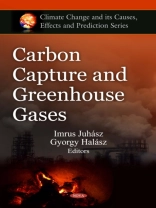Carbon capture and sequestration (or storage)-known as CCS-has attracted interest as a measure for mitigating global climate change because large amounts of carbon dioxide (CO2) emitted from fossil fuel use in the United States are potentially available to be captured and stored underground or prevented from reaching the atmosphere. Large, industrial sources of CO2, such as electricity-generating plants, are likely initial candidates for CCS because they are predominantly stationary, single-point sources. Electricity generation contributes over 40% of U.S. CO2 emissions from fossil fuels. Currently, U.S. power plants do not capture large volumes of CO2 for CCS, even though technology is available that can potentially remove 80%-95% of CO2 from a point source. Three main types of geological formations are being considered for storing large amounts of CO2 as a liquid: oil and gas reservoirs, deep saline reservoirs, and unmineable coal seams. The deep ocean also has a huge potential to store carbon. This book highlights the concerns about climate change that have focused the attention of policy-makers on ways to capture and store carbon dioxide emissions from fossil-fueled electricity generators.
Gyorgy Halasz & Imrus Juhasz
Carbon Capture and Greenhouse Gases [PDF ebook]
Carbon Capture and Greenhouse Gases [PDF ebook]
Koop dit e-boek en ontvang er nog 1 GRATIS!
Formaat PDF ● Pagina’s 192 ● ISBN 9781536126679 ● Editor Gyorgy Halasz & Imrus Juhasz ● Uitgeverij Nova Science Publishers ● Gepubliceerd 2017 ● Downloadbare 3 keer ● Valuta EUR ● ID 7228235 ● Kopieerbeveiliging Adobe DRM
Vereist een DRM-compatibele e-boeklezer












